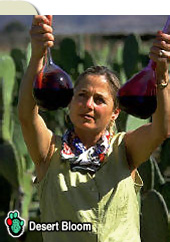
In recent years Nopal (scientifically a member of the Opuntia Cactaceae family)
been subjected to increasing study by hospital-based medical practitioners,
health scientists in private practice and researchers at such institutions as
the USDA Agricultural Research Service-Food and Nutrition Laboratory at
Beltsville Maryland, and a number of University based Health Science and
Nutrition Centers.
Hospital-based clinical studies have consistently found that Nopal has a clear
hypoglycemic effect on obese, insulin-resistant Type 2 Diabetic patients. Nopal
is rich in pectin (a soluble fiber), but in addition to fiber-related
inhibition of glucose absorption, fasting glucose is also significantly
lowered; indicating that Nopal also has the effect of increasing the body's
sensitivity to insulin. Focused studies corroborate this finding, showing that
small amounts of a active fraction isolated from nopal can partially reverse
Diabetes. Similar effects on reduced serum levels of low-density cholesterols
and triglycerides not explained by fiber absorption were found, indicating a
beneficial effect on hepatic function.
Classified as a vegetable, testing by the USDA has revealed Nopal to be rich in
soluble and insoluble dietary fiber and essential vitamins, minerals, amino
acids and other phytochemicals that have been diminished or lost in the modern
diet. Conversely, Nopal is low in carbohydrate calories and sodium: and, the
carbohydrates found in Nopal have been found to have the lowest 'Glycemic
Index' (a relative measure of the rate at which carbohydrates trigger a rise in
circulating blood sugar) among all plant foods tested to date.
The body systems reported to be most affected by Nopal are the glandular,
circulatory, digestive, urinary and nervous systems. Diabetes, heart conditions
and cancer, as well as lesser afflictions (such as anxiety and depression),
have been scientifically related to deficiencies in these systems and many
scientists now believe that increased consumption of natural vegetable and
herbal products that are specially rich in fiber and certain phytocemicals, can
significantly aid the human body in defending against and combating these and
the other disorders.
Scientific Studies of NOPAL
Abstract
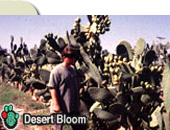
Nopal has traditionally been used as a medicinal plant and vegetable food in
the Latin American diet. Various studies have demonstrated Nopal's ability to
affect blood glucose and hypercholesterolemia. The intake of Nopal decreases
plasma LDL levels, increases expression of apolipoprotein receptor expression,
increases hepatic LDL turnover, and affects cholesterol homeostasis. Nopal
demonstrates the ability to decrease blood glucose levels as well the
hyperglycemic peak during glucose tolerance testing. In addition, Nopal has
demonstrated the ability to control experimentally induced diabetes in animals.
Similar studies, along with domestic surveys have prompted international
evaluation of the Nopal cactus to determine its ability to regulate glucose
utilization.
Nopal On Diabetes
Study 1
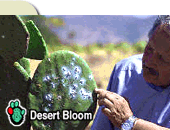
In 1995, the anti-hyperglycemic affect of 12 edible plants was studied by
Roman-Ramos et al, on 27 healthy rabbits. The fasting animals were given
subcutaneous glucose tolerance tests after gastric administration of water for
control group, tolbutamide suspension for reference control group, or a
traditional preparation of the plant for experimental group2. Blood glucose
levels were measured in fasting, and at 60, 120, 180, 240, and 300 minutes.
Among the twelve edible plants studied was, of coarse, Opuntia Streptacantha,
also known as nopal. Opuntia demonstrated a significant decrease in blood
glucose values as demonstrated as a decrease of 17.8% (p<0.05) in the area
under the glucose tolerance curve and a decrease of 18% (p<0.05) in the
hyperglycemic peak as compared to controls. The interest of
controlling diabetes mellitus with edible plants is simple, food and medication
become one. Possiblities include diabetic patients reducing dosage of current
hypoglycemic agents by incorporating these plants into their diet. Also,
patients with mild Type 1 diabetes could possibly avoid the use of these agents
and control blood glucose via diet alone.
Study 2
In 1996, a study by Trejo-Gonzales et al, demonstrated the ability to control
experimentally induced diabetes in rats by utilizing purified extract from
Opuntia, the prickly pear cactus. Diabetes was induced by intraperitoneal
injection of streptozotocin (STZ). A suspension of prickly pear powder was
administered daily through a gastric catheter. Throughout the experiment, the
glucose levels of the nondiabetic control groups remained similar to initial
levels. Insulin treated diabetic rats showed high glucose levels after 1 week,
decreasing by week 2 and then stabilizing at moderately high levels. Diabetic
rats receiving only Opuntia extract had glucose levels similar to those of
insulin treated rats. Diabetic rats receiving both insulin and Opuntia extract
were the only diseased animals with normalized glucose levels. Within 2 weeks,
glucose levels in this group had declined to values found in the nondiabetic
group. Insulin treatment was suspended due to hypoglycemia after week 8, and
normal glucose levels were maintained during the subsequent 7 weeks with
administration of Opuntia extract alone. The important conclusion expressed in
this study is that the control of diabetes by purified extract of Opuntia can
be attained with daily oral doses in the range of 1mg/kg body weight. This
appears to be a promising result which could possibly one day replace the
numerous high doses of insulin injection required for similar hypoglycemic
effects.
Nopal On Cholesterol
Study 1
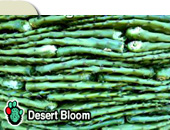
In 1992, a study by Fernandez et. al, demonstrated that the intake of prickly
pear pectin decreased plasma LDL concentrations by increasing the hepatic
apolipoprotein B/E receptor expression and increasing receptor mediated LDL
turnover in guinea pigs that were fed a high cholesterol diet. The guinea pigs
were given a diet containing lard and cholesterol (LC Diet) or a diet in which
cellulose was partially replaced by prickly pear pectin (LC-P diet). The guinea
pigs on the LC-P diet demonstrated a decrease in plasma LDL cholesterol
concentrations by 33% (p<0.001), whereas plasma VLDL and HDL cholesterol
levels were unchanged. This resulted in an overall decrease of 28% (p<0.01)
in total cholesterol for the LC-P diet group. Hepatic apolipoprotein B/E
receptor expression was 60% higher in guinea pigs on the LC-P diet (p<0.01)
whereas the affinity constant Kd was equal in both groups. The size of the
Apolopoprotein LDL pool and total LDL fractional catabolic rate exhibited a
significant negative correlation (r = -0.52, p<0.01).
Study 2
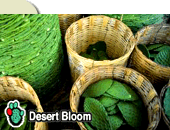
In 1994, a study by Fernandez et. al, investigated the effects of prickly pear
pectin on the rate of absorption of cholesterol and on HMG-CoA reductase and
acyl CoA: cholesterol acyltransferase (ACAT), the enzymes responsible for
hepatic cholesterol homeostasis. The guinea pigs were fed one of the following
three diets. 1) a lard-basal diet with no added cholesterol or prickly pear
pectin (LB diet). 2) the LB diet with cholesterol (LC diet). 3) the LC diet
with prickly pear pectin added at the expense of cellulose (LC-P diet). Total
plasma cholesterol was significantly lower in the LC-P than the LC group. The
cholesterol lowering was specific to LDL because VLDL and HDL cholesterol
plasma concentrations were unaffected. It was determined that this
hypocholesterolemic effect of prickly pear pectin on total plasma cholesterol
and LDL levels does not result from a reduction in cholesterol absorption, but
may be due to its affects on LDL receptor expression and LDL turnover. This
lowers hepatic ACAT activity while not affecting hepatic HMG-CoA reductase
activity, therefore having a major effect on hepatic cholesterol homeostasis.
Analysis on Nopal
Based on a survey of South Texas residents that revealed a significant use of
herbal remedies, including Opuntia, Aguilar et al. have been reviewing and
systematically quantifying a relationship between the prickly pear cactus and
the metabolic control of people with
Type 2 Diabetes Mellitus.
Analysis of six medical studies from Mexico has provided sufficient evidence
that ingestion of prickly pear cactus reduces serum glucose levels among
diabetics between 10 to 30 mg/dl at 30 to 180 minutes post-ingestion when
measured from baseline. Complete full-scale review, however,
is incomplete because published control group data was determined to be
insufficient. The primary investigators have agreed to provide the complete
data on control groups to assist completion of international review.
Definite conclusions cannot be made as of yet, however, preliminary findings
strongly suggest that ingestion of prickly pear cactus has a true metabolic
effect for diabetic patients.
Conclusion
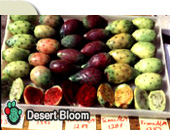
In Latin American folk medicine, curanderos have continued to utilize herbs and
medicinal plants to maintain the well-being of their community. These
traditions have endured many generations, and have been incorporated into daily
life and beliefs. As we progress in this age of technology, we are continuously
reminded about our history and the reasons why beliefs and traditions have
remained throughout the ages. We continue to validate traditions that were once
well established, but now via scientific and research methodology.
The nopal has not only become a food staple, but has been utilized as a mode of
controlling disease, such as, diabetes and hypercholesterimia.
The interest with alternative treatments stems from the limitations of current
diabetic treatments. Management of Diabetes Mellitus consists of controlling
glucose intake in the diet and utilizing pharmacological therapies which
attempt to stabilize the glucose levels. The use of drugs, however, has a
"downside" due to side effects and interactions with other medications or due
to the fact that they become less effective with prolonged use. The problem
with insulin injection is that while it does lower blood glucose, it does not
maintain physiological normal levels.
Nopal appears to be one
of the most promising sources of "plant-derived Diabetes Mellitus-active
suppressants". The results of the studies referred to above
indicate the importance and the need to advance the investigation of Nopal in
human clinical trials. In addition, Nopal has demonstrated its use in
altering and managing cholesterol levels. With the widespread incidence
of heart disease, the importance of continued investigation into this mechanism
of action of Nopal is obvious and will provide insight on how to combat
and overcome this major cause of death.
REFERENCES
-
Ibanez-Camacho, R. and Roman-Ramos, R. Efecto hipoglucemiante del nopal.
Archivos de Investigacion Medica (MEX). 10 (1979). 223-230.
-
Roman-Ramos, R., Flores-Saenz, J.L., Alarcon-Aguilar, F.J. Anti-hyperglycemic
effect of some edible plants. Journal of Ethnopharmacology. 48 (1995) 25-32.
-
Fernandez, M.L., Lin, E.C.K., Trejo, A., McNamara, D.J. Prickly pear (Opuntia
sp.) pectin reverses low density lipoprotein receptor suppression induced by a
hyper-cholesterolemic diet in guinea pigs. Journal of Nutrition. v122. n12.
(Dec, 1992): 2230.
-
Fernandez, M.L., Lin, E.C.K., Trejo, A., McNamara, D.J. Prickly Pear (Opuntia
sp.) pectin alters hepatic cholesterol metabolism without affecting cholesterol
absorption in guinea pigs fed a hypercholesterolemic diet.(Biochemical and
Molecular Roles of Nutrients). Journal of Nutrition. v124, n6 (June,
1994):817-823.
-
Ciesla, Bill. Opuntia: points about the prickly pear. Americas (English
Edition). v40, n4 (July-Aug,1988):10.
-
Trejo-Gonzalez, A. Gabriel-Ortiz, G., Puebla-Perez, A.M., Huizar-Contrera,
M.D., Munguia-Mazariegos, M., Mejia-Arreguin, S., Calva, E. A purified extract
from prickly pear cactus (Opuntia fuliginosa) controls experimentally induced
diabetes in rats. Journal of Ethnopharmacology. 55 (1996) 27-33
-
Aguilar, C., Ramirez, C., Castededa-Andrade, I., Frati-Munari, A.C., Medina,
R., Mulrow, C., Pugh, J. Opuntia (prickly pear cactus) and metabolic control
among patients with diabetes mellitus (abstract). Annu Meet Int Soc Technol
Assess Health Care, 1996, 12:14.
See Nopal Benefits in "Nopal Benefits" - Click here to
Continue - 